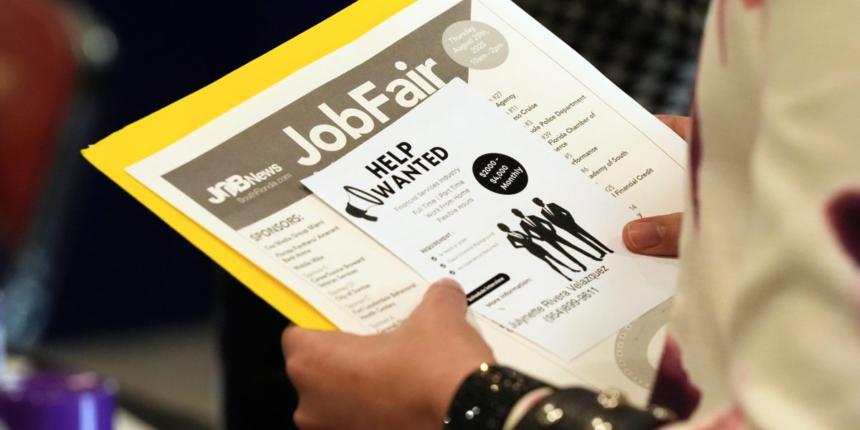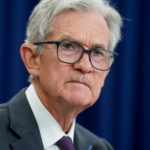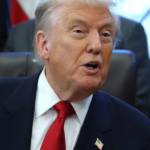When Carly Kaprive left a job in Kansas City and moved to Chicago a year ago, she figured it would take three to six months to find a new position. After all, the 32-year old project manager had never been unemployed for longer than three months.
“I have definitely had mid-interview roles be eliminated entirely, that they are not going to move forward with even hiring anybody,” she said.
“It’s like an insider-outsider thing,” Guy Berger, head of research at the Burning Glass Institute said, “where outsiders that need jobs are struggling to get their foot in, even as insiders are insulated by what up until now is a low-layoff environment.”
Before the shutdown, the Labor Department reported that the hiring rate — the number of people hired in a given month, as a percentage of those employed — fell to 3.2% in August, matching the lowest figure outside the pandemic since March 2013.
Back then, the unemployment rate was a painful 7.5%, as the economy slowly recovered from the job losses from the 2008-2009 Great Recession. That is much higher than August’s 4.3%.
Many of those out of work are skeptical of the current low rate. Brad Mislow, 54, has been mostly unemployed for the past three years after losing a job as an advertising executive in New York City. Now he is substitute teaching to make ends meet.
“It is frustrating to hear that the unemployment rate is low, the economy is great,” he said. “I think there are people in this economy who are basically fighting every day and holding on to pieces of flotsam in the shark-filled waters or, they have no idea what it’s like.”
Yet on Wednesday, payroll processor ADP said that net hiring picked up in October as businesses added 42,000 jobs, after two months of declines. Still, the gain was modest. ADP’s figures are based on anonymous data from the 26 million workers at its client companies.
Jerome Powell, chair of the Federal Reserve, has called in a “curious balance” because both the supply of and demand for workers has fallen.
Economists point to many reasons for the hiring slowdown, but most share a common thread: Greater uncertainty from tariffs, the potential impact of artificial intelligence, and now the government shutdown. While investment in data centers to power AI is booming, elevated interest rates have kept many other parts of the economy weak, such as manufacturing and housing.
“The concentration of economic gains (in AI) has left the economy looking better on paper than it feels to most Americans,” Swonk said.
Suzanne Elder, 65, is an operations executive with extensive experience in health care, and two years ago the Chicago resident also found work quickly — three months after she left a job, she had three offers. Now she’s been unemployed since April.
She is worried that her age is a challenge, but isn’t letting it hold her back. “I got a job at 63, so I don’t see a reason to not get a job at 65,” she said.
Like many job-hunters, she has been stunned by the impersonal responses from recruiters, often driven by hiring software. She received one email from a company that thanked her for speaking with them, though she never had an interview. Another company that never responded to her resume asked her to fill out a survey about their interaction.
Weak hiring has meant unemployment spells are getting longer, according to government data. More than one-quarter of those out of work have been unemployed for more than six months or longer, a figure that rose sharply in July and August and is up from 21% a year ago.
Swonk said that such increases are unusual outside recessions.
But Kaprive is still sticking with it — she’s taken classes about Amazon’s web services platform to boost her technology skills.
“We can’t be narrow-minded in what we’re willing to take,” she said.









